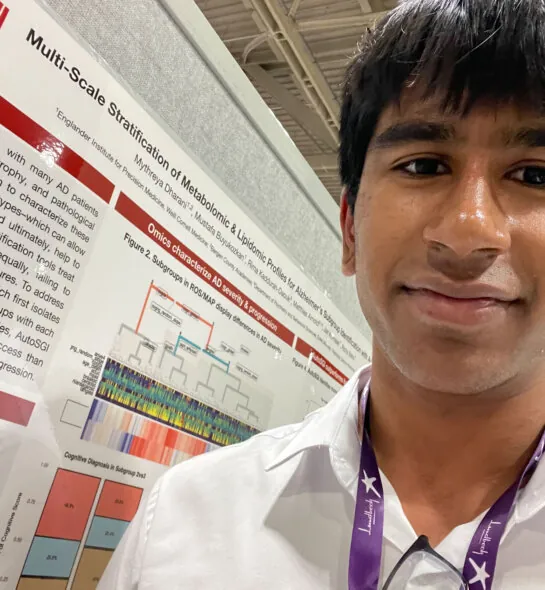Deeper Dive
For my project, I studied Alzheimer’s disease (AD) through the lens of computational biology. The causes of AD are still relatively unknown, and I believed that advancing our understanding of the disease would be both exciting to explore and crucial to creating a cure. One interesting way to study AD’s causes computationally is through subgroup identification, in which an algorithm uses the biological traits of a large population — such as gene expression measurements — to split them into “subgroups” of individuals, each with differing levels of AD severity. Subgroups with significant differences in severity can then be analyzed to determine the specific biological features (such as certain genes) that led to these subgroups being split and are potentially important for AD progression.
However, current subgroup identification algorithms struggle when the biological data used to characterize subgroups is noisy. To address this problem, I developed a new algorithm, AutoSGI, which handles data complexity in a thorough and unbiased way. I applied AutoSGI to study how metabolites (molecules involved in metabolism) affect the severity of AD in 500 human brain samples.
My project is the first metabolomics-guided investigation to study AD patients using multi-scale subgroup identification with data-driven feature selection. This analysis is significant for several reasons. First, I developed AutoSGI, an unbiased, comprehensive algorithmic framework for subgroup identification — a critical challenge in precision medicine and disease investigation. AutoSGI can be useful for a wide range of diseases, helping to mechanistically study their etiology or to derive new subgroups of individuals who will benefit from personalized treatment. Second, my analysis suggests additional metabolic changes in the brain that may contribute to the progression of AD in humans. As metabolism’s role in AD has gained more attention, my results add to the growing body of work supporting the significance of this connection.



